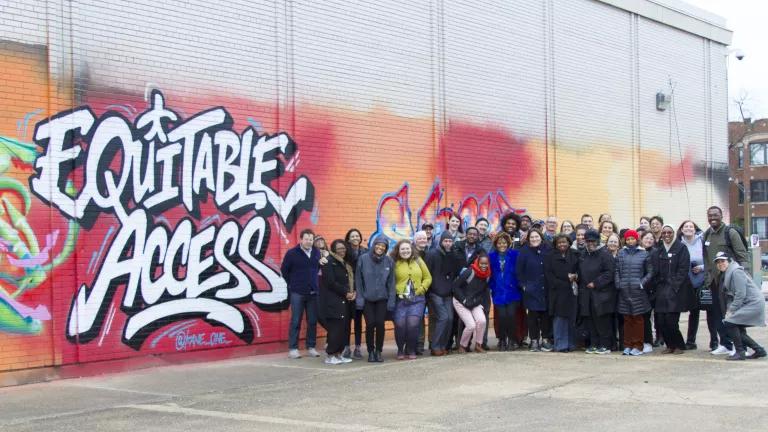
Will the retirement and replacement of California's last nuclear power plant increase costs for customers? NRDC and the plant's owner, the Pacific Gas & Electric Company, agree that running Diablo Canyon Nuclear Power Plant after 2025 would cost more than replacing it with cleaner, zero-carbon resources, led by energy efficiency and renewable energy like wind and solar.
PG&E recently alerted its 5 million customers in northern and central California via a utility bill insert that the utility has proposed a short-term 1.6 percent increase to begin the transition from nuclear energy to resources that will not increase greenhouse gas emissions. How can these cost statements be reconciled?
In the short term, the average residential customer's bill would go up about 5 cents a day if the joint proposal to retire and replace Diablo Canyon is approved by the California Public Utilities Commission (CPUC), as recommended by three national environmental groups, a prominent community group (the Alliance for Nuclear Responsibility) the plant's owner, and its principal unions. Most of that represents payments to plant workers and local authorities, to ensure that the 2025 retirement of the plant near San Luis Obispo, 250 miles south of San Francisco, is achieved without premature loss of skilled workers and infrastructure, along some initial procurement of zero carbon resources, starting with energy efficiency upgrades for buildings and equipment.
Once Diablo Canyon is retired, however, NRDC estimates that Californians will save at least $1 billion compared to the high cost of refurbishing an aging nuclear plant, which was initially designed a half century ago, and relicensing it to operate through 2044. In addition to lower overall electricity demand, the costs of renewable power are decreasing. At the same time, running a huge baseload nuclear plant designed to operate around-the-clock is a roadblock to replacing polluting power plants with emissions-free renewable energy that ramps up and down. For example, California at times today throws away solar energy at midday because it exceeds customers’ electricity needs and storage capacity is insufficient.
Diablo Canyon represents the world’s first nuclear power plant retirement to be conditioned on full replacement with lower cost zero-carbon resources. While nuclear plants are low-carbon facilities, they also are relatively costly, have other environmental impacts, and reduce the flexibility of electricity systems.
In fact, operating Diablo Canyon nuclear power plant past its 2025 license expiration would cost more than twice what many had anticipated, and significantly more than replacing it with energy efficiency and renewable resources, according to the analysis PG&E submitted to the CPUC—which regulates the state’s private utilities—in August. By PG&E's reckoning, continuing to run Diablo Canyon after 2025 could cost more than $1.7 billion annually.
The 30-day public comment period for the Joint Proposal is now closed and the CPUC is weighing the proposal.
Is 5 cents a day worth paying temporarily to achieve those savings and accelerate progress in California's clean energy transition—and gain long-term savings for PG&E customers? For NRDC, the answer is an emphatic yes and we hope the California PUC will agree.



